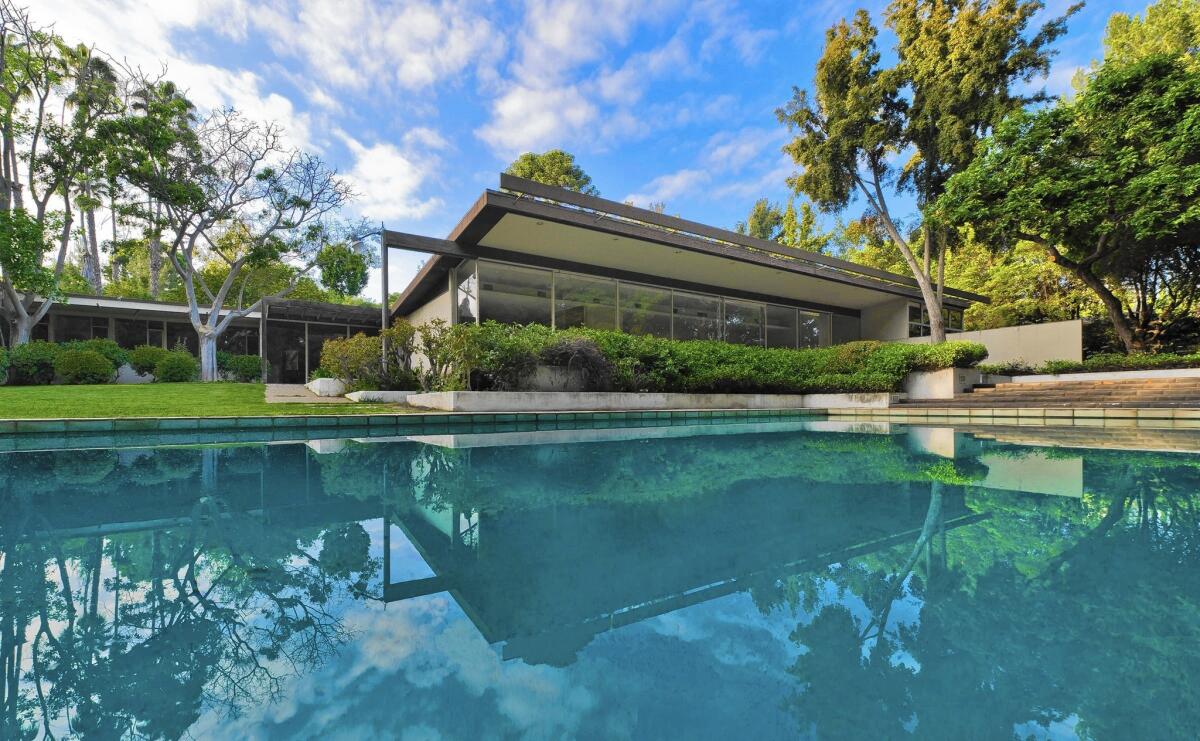Beverly Hills defeats move to weaken laws protecting historic buildings

Proponents of architectural preservation heaped praise on Beverly Hills three years ago for passing an ordinance that aimed to save significant buildings from the wrecking ball — or at least those that remained standing after owners knocked down Pickfair, the Friars Club, John Lautner’s Shusett House and other pedigree places.
The city has since granted landmark status to 26 properties — including the Beverly Hills Hotel, Greystone Mansion and the Virginia Robinson Estate and Garden — earning an A-plus on the Los Angeles Conservancy’s countywide Preservation Report Card for 2014.
To make the landmark designation process easier on homeowners, the Beverly Hills City Council recently recommended streamlining it. But at a joint special meeting Thursday in Beverly Hills’ City Hall (one of the 26 landmarks), Mayor Lili Bosse and Councilman John Mirisch beat back two planning commissioners’ efforts to push through changes that many preservation activists said were too extreme and would have gutted the ordinance.
Bosse and Mirisch say the proposed changes went well beyond the City Council’s intention to help buyers and owners learn more quickly whether the city intended to designate properties as landmarks. They directed the city’s Planning Commission and Cultural Heritage Commission to collaborate on a revision that would maintain the city’s A-plus grade.
“I was walking on air,” said Steven Price, author of a forthcoming book about the city’s Trousdale Estates neighborhood. Typically, he said, officials in such situations tend to throw “a bucket of cold water” on preservationists, but the Beverly Hills outcome “was more like a warm shower.”
The proposed revisions would have limited the number and types of resources that could be protected (especially without an owner’s consent), prohibited the creation of historic districts in single-family neighborhoods, removed some entries from the city’s approved list of master architects and changed the name of the Cultural Heritage Commission to the Historic Preservation Commission.
The name-change suggestion, in particular, riled Kimberly Reiss, president of Beverly Hills Heritage, a local advocacy group. She said it would strip the commission of importance and obscure its task. Bosse asked planning commissioner Craig Corman, who wrote many of the revisions, why he considered the name change necessary.
“A large part of our community arrived post-1979,” he said, a reference to the many Iranians who fled to Southern California after Iran’s Islamic revolution. Some of them, he said, felt that “cultural heritage” excluded them. “I was trying to make it neutral, more sensitive to people in the community,” he said.
Some property owners and builders say they are concerned that granting landmark status could dampen real estate values. Mirisch, the councilman, urged commissioners to research how prices have been affected in other cities with robust preservation efforts. “My sense is that ultimately it’s a benefit,” Mirisch said.
To encourage owners to seek landmark designations, Beverly Hills offers tax breaks, under the state’s Mills Act, and other incentives. Hollywood producer Jerry Bruckheimer, for example, recently agreed not to oppose a designation for his two-acre property on Crescent Drive, the former Harry Cohn Estate. In return, the city agreed to let him build an additional several thousand square feet. The house, designed by noted architect Robert D. Farquhar, was built in 1927 for Cohn when he was the head of Columbia Pictures.
The timing of the special meeting was apt. The day before, the Cultural Heritage Commission had recommended that the City Council add to the landmark list the Richard Neutra-designed Kronish Residence, built in 1954. It was the narrowly averted demolition of the dilapidated house in 2011 that helped galvanize Beverly Hills’ preservation community and inspired the ordinance.
Real estate developer Herbert Kronish and his wife, Hazel, bought the Sunset Boulevard property from actress Shirley Temple and hired seminal Modernist architect Neutra to design a new home. The result, according to the conservancy, was a spectacular one-story International Style house with a pinwheel-shaped design.
The 7,000-square-foot house — one of only three Neutra designs in Beverly Hills and the only one that survives intact, the conservancy said — was on the brink of being bulldozed. At the eleventh hour, a wealthy buyer stepped in.
“Our client really challenged us to understand the original building and … bring it back to the original spirit,” said architect Leo Marmol, who was hired to rehabilitate the house. Marmol’s team integrated state-of-the-art heating and cooling technologies and appliances. “You can buy and restore a historic house and not give up your definition of comfort,” he said.
The best examples of our architectural past should “inspire us to learn and grow and change,” he said. “I think it’s sad when a community of wealth forgets and takes a property-rights perspective to fight preservation.”
Twitter: @MarthaGroves
More to Read
Start your day right
Sign up for Essential California for news, features and recommendations from the L.A. Times and beyond in your inbox six days a week.
You may occasionally receive promotional content from the Los Angeles Times.






